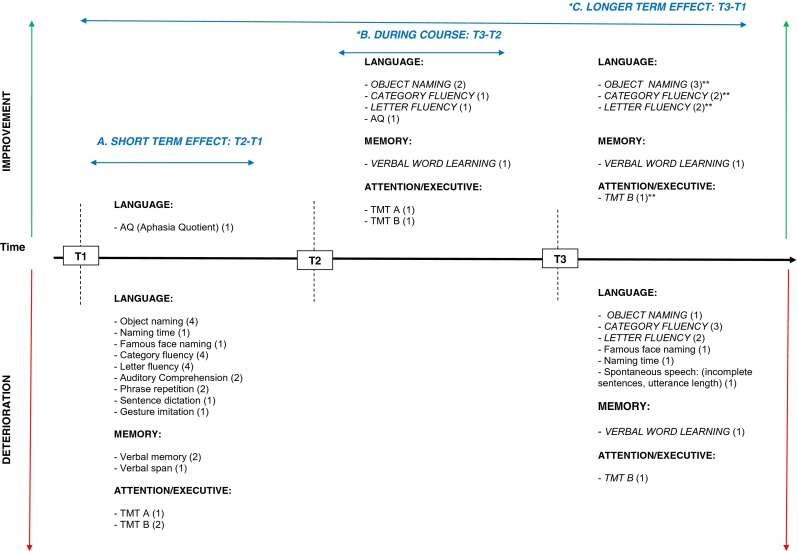Fig. 2.

Summary of sensitive neuropsychological tasks for deterioration or improvement in the short and longer term after glioma surgery. T1 before surgery, T2 directly after surgery, T3 follow-up after surgery. Below the timeline, a summary is provided of tasks which deteriorated between test moment in the different cognitive domains, whereas improvements are shown above the timeline. Comparisons between three different test moments are illustrated: A T2-T1, short-term effect of surgery; B T2-T1, during course; C T3-T1, longer-term effect of surgery. Tasks in italics and capital letters are tasks that show mixed outcome at short term and/or longer term (3-6 months) after surgery, i.e. they show both deterioration and recovery. The number of studies finding a specific task sensitive for change are presented in parentheses. *The sensitive tasks revealed by Chainay et al. (2009) were not considered in this figure as they were all administered within 7 days after surgery. **Some studies reported no significant difference between follow-up phase (T3) and preoperative baseline level (T1), suggesting recovery at T3 after a decline in the immediate postoperative phase (T2): OBJECT NAMING (2) Bello et al. (2007), Moritz-Gasser et al. (2013); CATEGORY FLUENCY (2) Moritz-Gasser et al. (2012, 2013); LETTER FLUENCY (2) Bello et al. (2006), Papagno et al. (2011); VERBAL MEMORY (1) Papagno et al. (2011); TMT B (1) Santini et al. (2012)
